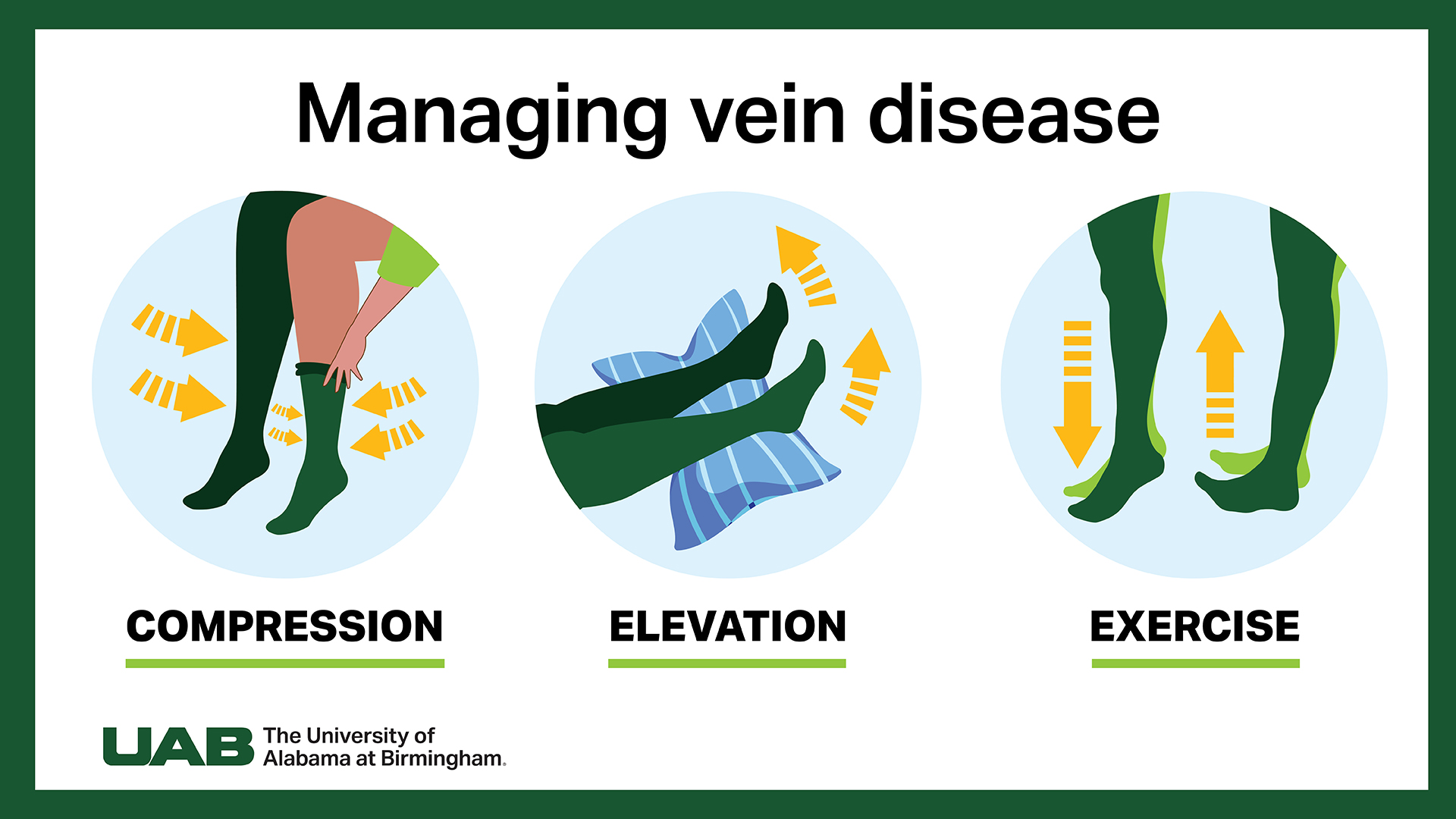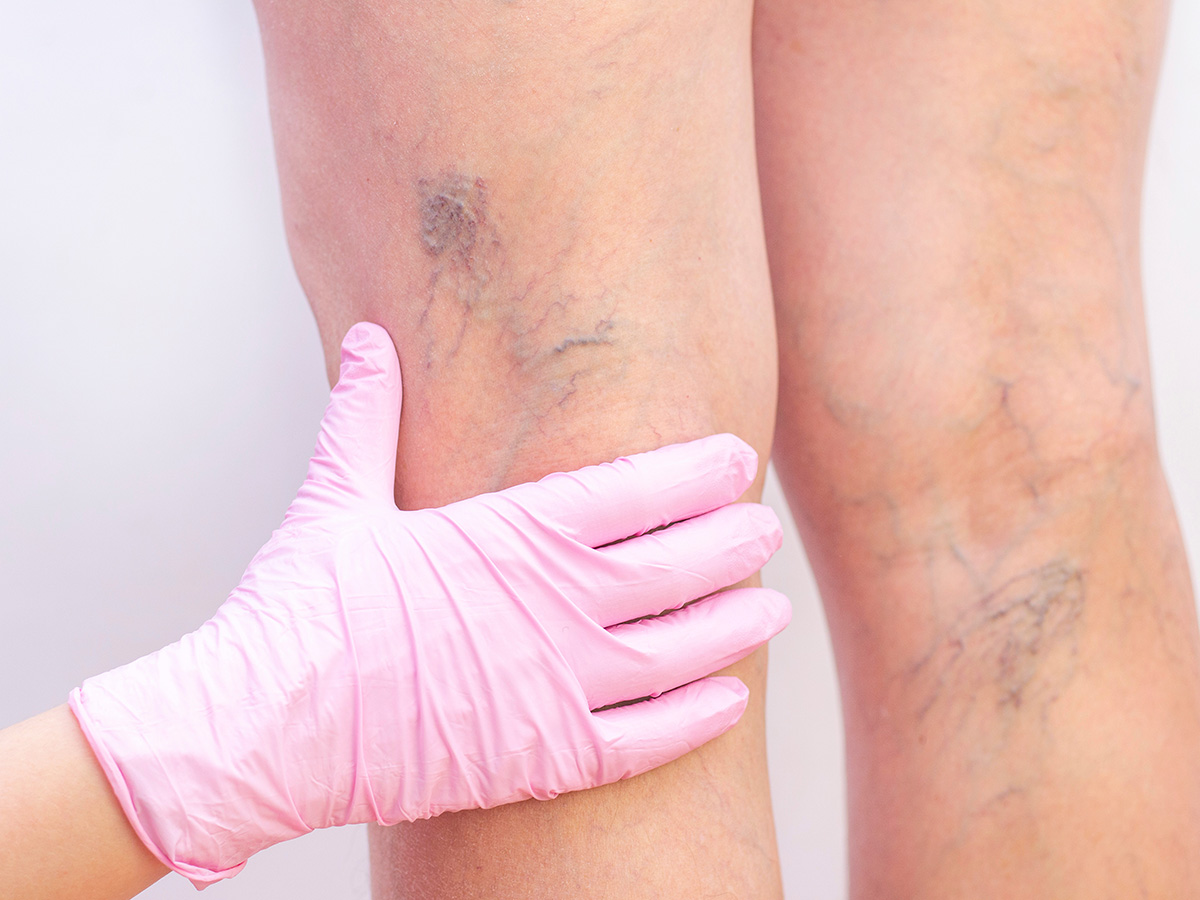
Vein disease is more than just a cosmetic concern. It is a widespread medical condition that can significantly affect quality of life if left untreated. From persistent leg pain and swelling to visible varicose or spider veins, these symptoms often signal underlying issues with blood flow in the veins, particularly in the lower extremities.
According to Danielle Sutzko, M.D., a vascular surgeon at the University of Alabama at Birmingham Vein Clinic, early recognition and proactive management of vein disease are key to preventing long-term discomfort and complications.
Common types of vein disease
“We focus on treatment of vein disease at the UAB Vein Clinic,” said Sutzko, an assistant professor in the Division of Vascular Surgery and Endovascular Therapy. “Typically when people have leg pain and swelling from vein disease, they have what’s called chronic venous insufficiency.”
Chronic venous insufficiency, varicose veins and spider veins are some of the common vein diseases that are treated at the clinic.
Chronic venous insufficiency occurs when the valves in the veins malfunction and cause blood to build up in the legs, not allowing enough blood to flow back to the heart. It can lead to swelling and other painful effects.
Varicose veins are swollen veins that are typically visible on the legs. They are caused by pools of blood that occur when the valves do not operate correctly or by weakened veins.
Spider veins can look like a smaller version of varicose veins, but are closer to the skin’s surface and are not raised or bulging. Unlike the other conditions, spider veins can be on any part of the body and can present as blue, purple or red.
Risk factors and symptoms
“Age, sex, family history, obesity, prolonged standing or sitting, smoking, pregnancy, history of deep venous thrombosis, or any previous trauma to the legs can put people at a higher risk of vein insufficiency,” Sutzko said.
Early signs of vein disease include achiness in the legs toward the end of the day, swelling and darkening of the skin. More severe symptoms include the skin’s breaking down and ulcerations, usually on the inside of the leg above the ankle.
Some people can have early vein disease without having noticeable symptoms, but Sutzko says this does not pose a large threat.
 “The good news is vein disease in general is not life- or limb-threatening,” Sutzko said. “It is more of an inconvenience or a discomfort. If you experience any symptoms of vein disease, talk to your doctor so they can help relieve some of the discomfort you may be feeling.”
“The good news is vein disease in general is not life- or limb-threatening,” Sutzko said. “It is more of an inconvenience or a discomfort. If you experience any symptoms of vein disease, talk to your doctor so they can help relieve some of the discomfort you may be feeling.”
Managing vein disease
Sutzko’s recommendations for managing vein disease include compression, elevation and exercise.
“The best thing you can do once you have a diagnosis of chronic venous insufficiency is use compression socks, which involves wearing medical grade compression at 20 to 30 millimeters of mercury,” Sutzko said.
Compression socks are available in various materials. If one type of stocking is uncomfortable, people can switch to a different blend of materials or length style. In the heat of the summer, wearing compression socks made from materials like nylon or cotton can make for a lighter feel while still providing adequate compression.
UAB Vein Clinic
The UAB Vein Clinic provides various treatments to patients for vascular disease and other vein-related conditions. Surgical, medicinal and other treatments are recommended based on a patient’s condition.
“Patients who are suffering with pain and swelling of their legs should go to their primary care doctor first and get a venous ultrasound,” Sutzko said. “If it shows that you have venous insufficiency, ask your doctor to refer you to the UAB Vein Clinic, so we can help treat your condition.”
The first thing typically offered is compression therapy and a discussion about overall vein health. If compression, elevation and exercise do not help with the condition, Sutzko says they will then discuss procedural options if the patient is a candidate.